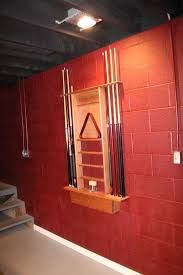How To Waterproof Interior Concrete Walls

Then apply a coat of waterproof masonry cement to your basement walls.
How to waterproof interior concrete walls. It doesn t break down as easily isn t susceptible to the same flaws and doesn t require as much care or treatment down the road as a result. By waterproofing your basement you will be preventing health dangers and also costly repairs. Drylok extreme latex base masonry waterproof coating is drylok extreme latex base masonry waterproof coating is ideal for interior exterior above or below grade masonry walls basement walls foundations landscape walls cinder blocks concrete blocks bare concrete swimming pools stucco and brick. This water can cause structural damage and grow mold.
Other than concrete it can also be used effectively even on interior of drinking water concrete tanks and cisterns as it is made safe. If your foil test showed that water is soaking through your basement walls and leaving them wet seal the interior of the walls with a high quality waterproof paint such as drylok white extreme. It also helps in reducing radon gas that penetrates through walls. When moisture infiltrates the interior walls of your home it can cause mold mildew cracking or even structural damage like wall displacement.
Otherwise water will seep in through the walls of your basement. Moreover it works on either wet or dry surfaces. Features flexible encapsulated polymers for a beautiful smooth waterproof finish. It penetrates deep into the concrete to strengthen and waterproof it.
The product does not have a strong odor and has an easy application. Moisture most commonly impacts the interior walls of basements as groundwater and rainwater can seep through small openings in concrete basement foundations. It can give you the protection your walls need and make them look neat. Your cinder block basement wall must be waterproofed to provide a proper home environment.
Featuring a semi translucent variegated look the sealant is similar to acid staining except that it offers many more colors. Extend waterproofing at least 12 inches onto intersecting walls that don t have to be waterproofed. The cement will expand inside the fissures and create a water tight seal. When deciding what walls get waterproofed follow this basic rule.
Waterproof any foundation wall that has earth on one side and usable space on the other including crawl spaces.














































